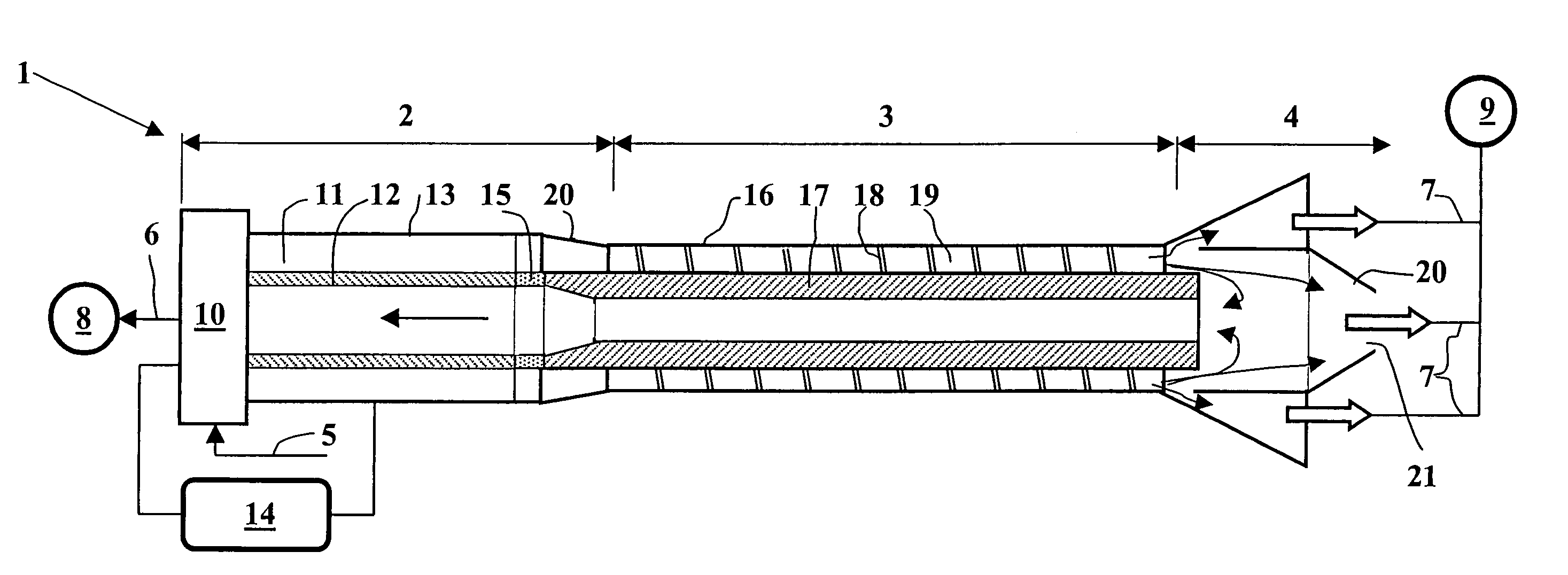Separation device comprising a tubular electrocoalescer
a separation device and electrocoalescer technology, applied in electrostatic separators, electrolysis, centrifugal force sediment separation, etc., can solve the problems of real risk of appearance of breakdown phenomena between electrodes and low effluent flow ra
- Summary
- Abstract
- Description
- Claims
- Application Information
AI Technical Summary
Benefits of technology
Problems solved by technology
Method used
Image
Examples
Embodiment Construction
[0025]The general layout of an example of embodiment of a device according to the invention meets the following requirements:[0026]the fluid is preferably fed under pressure between two cylindrical and concentric walls, the tangential inlet is not essential but preferably maintained,[0027]the electrocoalescer has a determined geometry allowing to obtain a sufficient residence time for the effluent. For example, its length can be about 1 m and the annular space is such that the residence time of the fluid is 10 seconds at a flow rate of 500 l / h. The distance between the cylinders is therefore 7.86 mm (radius difference between a 2-inch tube (50.8 mm) and a 1-inch tube (25.4 mm)),[0028]a centrifuge is arranged after the electrocoalescer, whose motive element is one or more helical surfaces arranged between two concentric cylinders over, for example, a length of 500 mm. For information, the distance between the cylinders has been reduced to 6.35 mm (radius difference between a 1.5-inch...
PUM
| Property | Measurement | Unit |
|---|---|---|
| Angle | aaaaa | aaaaa |
| Angle | aaaaa | aaaaa |
| Electrical conductivity | aaaaa | aaaaa |
Abstract
Description
Claims
Application Information
 Login to View More
Login to View More - R&D
- Intellectual Property
- Life Sciences
- Materials
- Tech Scout
- Unparalleled Data Quality
- Higher Quality Content
- 60% Fewer Hallucinations
Browse by: Latest US Patents, China's latest patents, Technical Efficacy Thesaurus, Application Domain, Technology Topic, Popular Technical Reports.
© 2025 PatSnap. All rights reserved.Legal|Privacy policy|Modern Slavery Act Transparency Statement|Sitemap|About US| Contact US: help@patsnap.com



